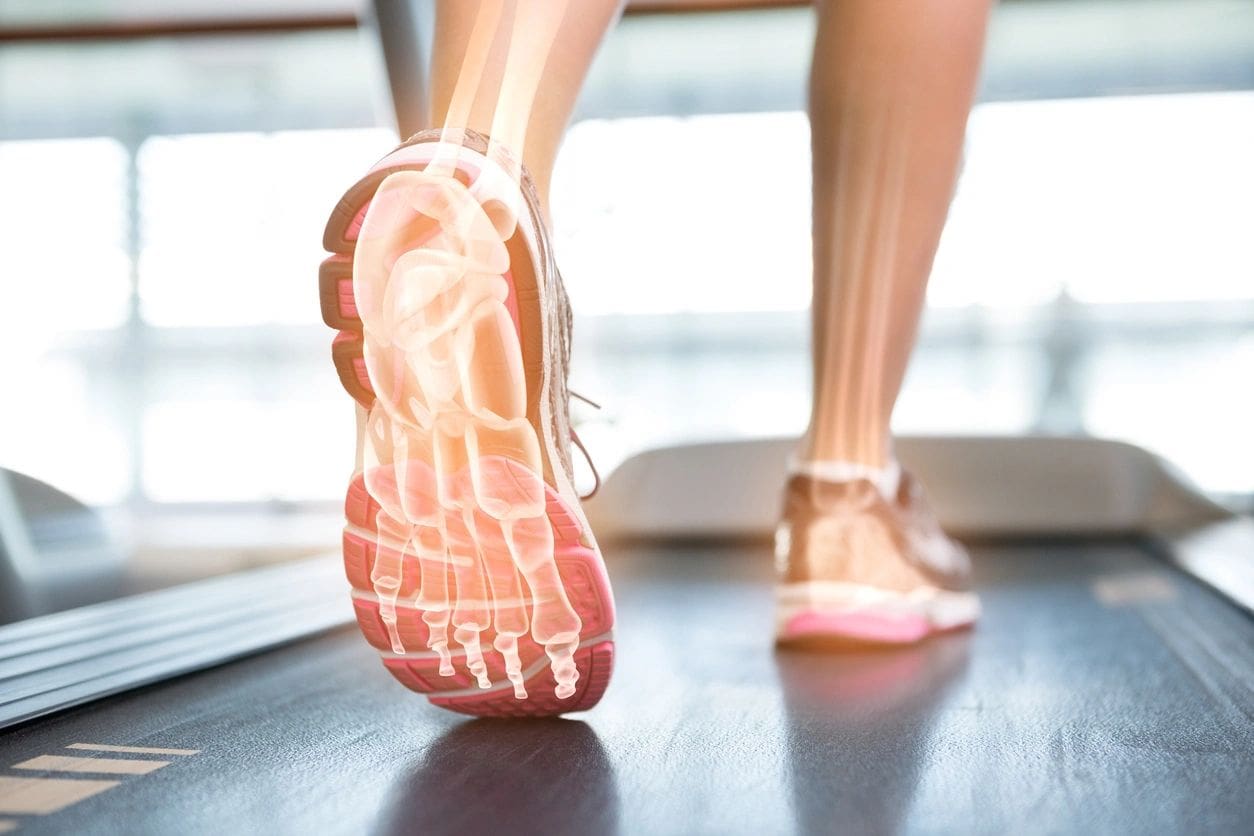
Do you have Plantar Fasciitis?
What is the Plantar fascia?
The Plantar fascia is a thick fibrous band of connective tissue across the sole of the foot. The Plantar fascia is not a muscle. It originates from a narrow attachment on the inside portion of the calcaneus (heel bone) and travels forwards and outwards to its broad attachment on the whole length of the ball of the foot. It is triangular in shape.
What does the Plantar fascia do?
The Plantar fascia acts to stop the over flattening of the arch of the foot.
What is Plantar Fasciitis (Fasciopathy)?
Historically, this injury has been called “Plantar Fasciitis” but more recently “Plantar Fasciopathy” is the correct medical term used to the process of micro tears or irritation of the Plantar fascia. Typically this occurs at the origin of the Plantar fascia around the heel or in the middle of plantar fascia structure.
What causes Plantar Fasciitis?
Plantar fasciitis is usually caused by either an ongoing over stretch or compression of the area.
There are several factors that can lead to this traction or compression of the Plantar fascia:
Poor Foot mechanics– This can include excessive foot pronation or “flat feet” causing an elongated foot arch ie over stretching. It can also include weak intrinsic muscles of the foot (Intrinsic muscles) causing weak arches.
Poor lower limb mechanics– This can include but is not exclusive to tight Achilles tendons, weak Gluteal muscles or a “knocked knee” posture. As a result of these muscle imbalances, the Plantar fascia has to work harder and is therefore overloaded.
Poor footwear– This is generally due to a lack of arch support in footwear such as flip flops or shoes that are flat with little support. This causes an over stretching of the Plantar fascia and symptoms can ensue. High heels are not recommended when someone is suffering from Plantar Fasciopathy as the extra heel height causes compression of the Plantar Fascia although many report decreased plantar fascia pain while wearing them.

Environmental factors– Plantar fasciitis is more common in people who stand all day and therefore compression of the plantar fascia results. Alternatively, somebody who is very active and engages in sports, especially sports that involve running, can suffer from Plantar fasciopathy.
Bony spurs on heel bone– Calcaneal (heel bone) spurs or calcification can occur as the Plantar fascia has pulled on its attachment to the Calcaneus for a long time as its been overstretched. This can then in turn irritate the Plantar Fascia due to compression.
Trauma– Stepping on a sharp, hard object such as a stone or a nail for example can result in an insult to the Plantar fascia and Plantar fasciitis results.
Weight– The heavier a person is, invariably the more weight goes through the soles of their feet and the Plantar fascia reaches a tipping point where the amount of load it is put under exceeds the capacity that it can cope with. This is when pain results. Furthermore, during pregnancy the combination of increased weight, potential swelling of the feet and the inevitable laxity of ligaments due to the hormone relaxin being released results in an over stretching of the Plantar fascia and symptoms can result.

Age– As we get older, the quality of our Connective Tissue can deteriorate and this often results in our foot arches sagging or collapsing. This sagging makes Plantar fasciopathy more likely.
Symptoms
- Symptoms are generally felt as an ache or sharpness on the inside aspect of the heel on the sole of the foot.
- The pain can sometimes spread forward and out towards the ball of the foot.
- These mentioned areas are usually also tender to the touch.
- The pain is also at its worst, first few minutes in the morning when getting out of bed and after exercise or prolonged walking.
- Pain is also felt for the first few steps after prolonged sitting
Diagnosis
Physical Therapy
At Dynamic Physical Therapy we perform a detailed evaluation of standing posture and gait analysis. We will assess how all the joints and muscles of the foot, ankle, knee & hip . After that we look at muscle imbalances- for example is one muscle tight, does it have reduced muscle bulk or is it weaker. Then we palpate the soft tissues to see how they feel, which areas are tender to touch, which areas feel thickened and so on.
After we perform the evaluation we will discuss our findings and develop a detailed plan of care with the patient. Treatment consists of one-on-one care with a physical therapist that includes manual treatment, postural/gait training and a detailed exercise program.
X-ray/ Ultrasound scan (USS)/ MRI
For Plantar Fasciitis, these tests are only required on the rare occasions when Therapy is not helping. An Xray is necessary if you are suspecting a bony spur on the heel bone (calcaneus) or calcification of the Plantar fascia itself. An ultrasound scan or an MRI may be necessary to identify any tears in the Plantar fascia. The USS or MRI will also show any areas of thickening or inflammation in the Plantar Fascia.
The next blog post will tackle ways to treat Plantar Fasciitis. If you think you are suffering from Plantar Fasciitis, call 312-778-6455, book online, or email info@dynamic-pt.com to schedule your appointment today.
